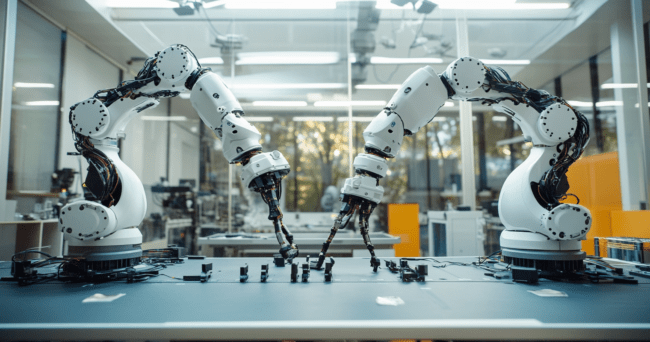Introduction
Data science has revolutionized the way we process information and make decisions. Machine learning frameworks like Scikit-learn and Keras have become integral tools in this domain. These frameworks, along with others like TensorFlow and PyTorch, offer powerful capabilities for building predictive models. In this article, we will explore these frameworks, their features, and how they aid in the machine learning process.
Scikit-learn
Scikit-learn is one of the most popular machine learning libraries for Python. It’s designed to be simple and efficient for data analysis and modeling. The library includes a wide variety of algorithms, ranging from linear regression to clustering and classification.
Key Features
- Consistency: Scikit-learn provides a well-defined API that is consistent across different models, making it easy to switch and compare models.
- Documentation: The library has comprehensive documentation, which includes tutorials and user guides, making it accessible even to beginners.
- Integration: It integrates seamlessly with other Python libraries like NumPy and Pandas.
Strengths and Weaknesses
Scikit-learn excels in simplicity and ease of use. It’s ideal for beginners and those working on standard machine learning tasks. However, it may not be the best choice for deep learning or highly specialized tasks. For those, you might look at frameworks specifically geared towards deep learning, like Keras or TensorFlow.
Keras
Keras is an open-source software library that provides an interface for artificial neural networks. It is user-friendly, modular, and extensible, making it easy to build and experiment with different neural network architectures. Keras can run on top of TensorFlow, Microsoft Cognitive Toolkit, Theano, or PlaidML.
Key Features
- Modularity: Keras is highly modular, which allows for easy customization. You can build a model by plugging together building blocks like layers, objectives, and optimizers.
- Extensibility: It is easy to extend the library with custom layers, metrics, and data generators.
- Backends: Keras can run on multiple backends, providing flexibility in deployment.
Strengths and Weaknesses
Keras is lauded for its simplicity and ease of use, making it highly popular among beginners and researchers. However, this simplicity can be limiting when optimization and fine-tuning of models are required. For more detailed control, one might opt for TensorFlow or PyTorch.
TensorFlow
TensorFlow, developed by Google, is a comprehensive open-source platform for machine learning. It includes tools and libraries that are most useful for deploying machine learning models in production environments.
Key Features
- Scalability: TensorFlow is designed to work at scale, from small devices to large distributed systems.
- Flexibility: The framework allows for low-level and high-level API access, giving users control over model building and training.
- Support for Deployment: TensorFlow provides robust tools for deploying models including TensorFlow Serving and TensorFlow Lite.
Strengths and Weaknesses
TensorFlow is incredibly versatile and powerful, making it suitable for a range of machine learning tasks, from research to production. However, its complexity can be daunting for beginners. The steep learning curve and verbose syntax are often cited as drawbacks.
PyTorch
PyTorch, developed by Facebook’s AI Research lab, is another significant player in the machine learning landscape. It is known for its flexibility and usability, particularly in research settings.
Key Features
- Dynamic Computation Graphs: PyTorch builds dynamic computation graphs (Define-by-Run), which makes the debugging process more intuitive and flexible.
- Strong Community: The PyTorch community is vibrant and active, providing extensive resources and support.
- Integration: PyTorch integrates seamlessly with Python-based scientific libraries.
Strengths and Weaknesses
PyTorch is popular in research due to its dynamic graph structure and usability. It’s ideal for experimentation and quick prototyping. However, it may not offer the same level of maturity and robustness as TensorFlow for production deployment.
Other Noteworthy Frameworks
While Scikit-learn, Keras, TensorFlow, and PyTorch dominate the machine learning field, other frameworks also deserve mention.
Theano
Theano is one of the older deep learning libraries. While it laid the groundwork for many modern frameworks, active development has ceased, making it less relevant today.
MXNet
MXNet is another scalable deep learning framework. It’s known for its efficiency and is backed by Amazon Web Services, but it hasn’t caught on as widely as TensorFlow or PyTorch.
Caffe
Caffe is geared towards image classification and convolutional neural networks. It’s optimized for speed but lacks the flexibility of other frameworks, limiting its broader applicability.
Conclusion
Choosing the right machine learning framework depends on your specific needs and comfort level. Scikit-learn is a good starting point for general machine learning tasks. Keras offers simplicity in building neural networks, while TensorFlow provides comprehensive tools for production-ready systems. PyTorch is favored in research for its flexibility. The right framework can make a significant difference in efficiency and effectiveness, so understanding their features and strengths will guide you in making informed decisions.

